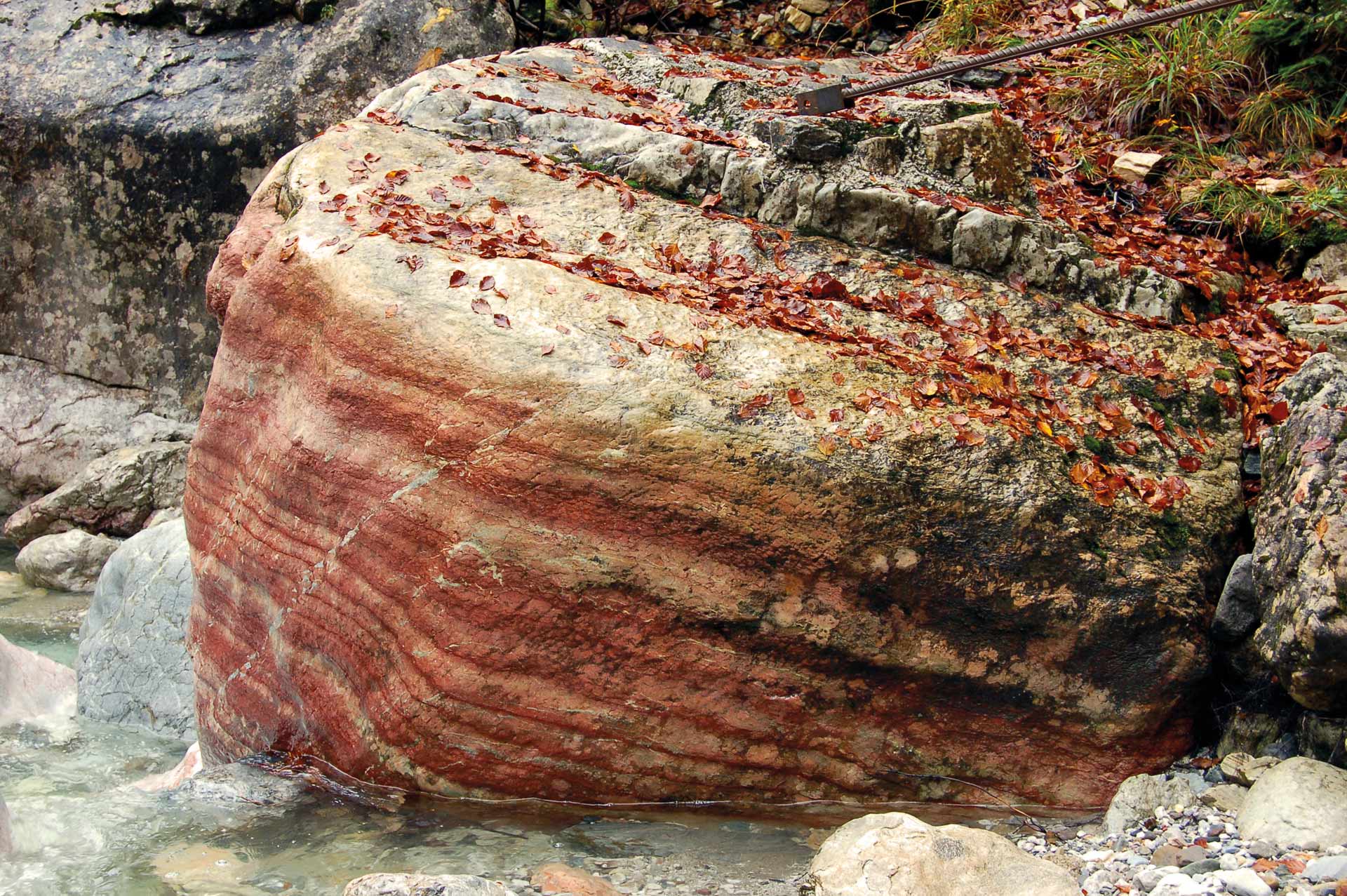A large block of red-grey laminated limestone can be seen near the bridge on the banks of the brook. This is one of the most beautiful rocks in the Carnic Alps. Looking more closely, you will see a network-like structure on its surface. This consists of darker clay particles surrounding lighter limestone cores. Rocks with this structure are known as nodular limestone. Just how they developed is still not clear.
In addition to its beauty, this 400 million years old nodular limestone has another special feature, the fact that is has been deposited at this location. Rocks of this kind do not naturally occur in the catchment area of the Garnitzen brook. Hence, this boulder has not been transported to its present position by water. But there is another explanation.
During the last Ice Age, the entire Gailtal valley was covered by glacial ice up to around 2,000 m. Unlike water, glaciers can flow over passes or water sheds carrying rock debris over great distances. Since such rocks are only exposed west of the Nassfeld area, the occurrence of this rock in the Garnitzenklamm gorge can easily be explained by glacial transport from a region several kilometres to the west. Rocks transported by glaciers in this way are known as erratic blocks or boulders.

